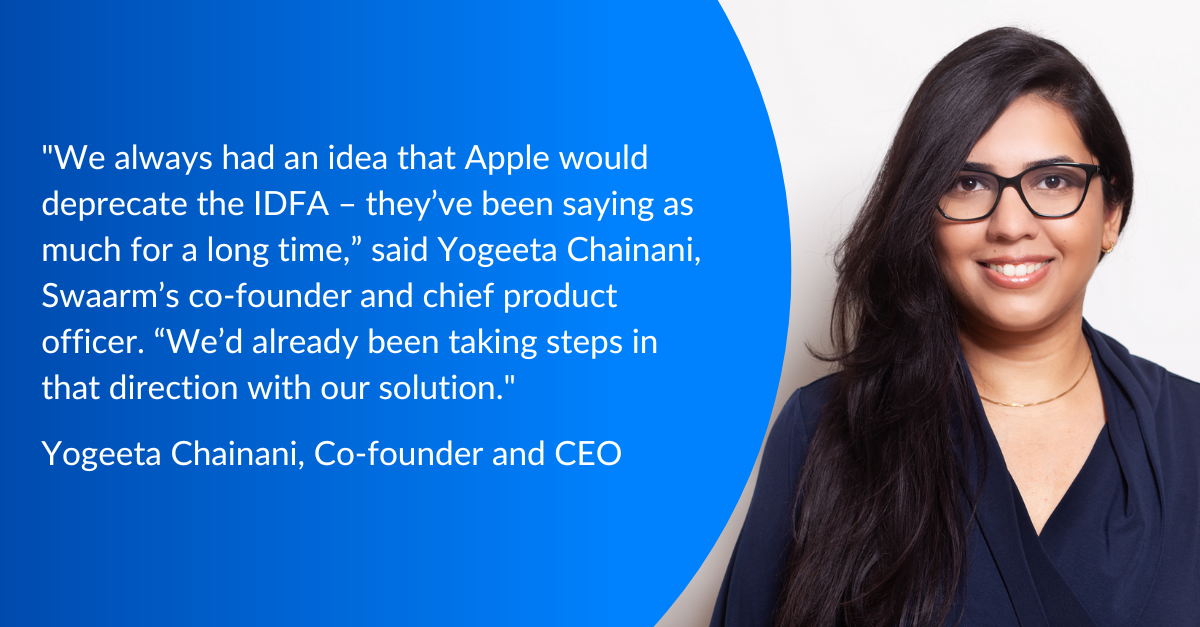This article was originally published by adexchanger. It talks about us, Swaarm, how we specialize in performance marketing tracking, and how we successfully adapted to Apple’s plans to limit IDFA use, launching our privacy-enabled attribution (PEA) chain just in time. The PEA chain allows for the secure sharing of the tokenized campaign and traffic source information without compromising user privacy, providing advertisers with valuable insights for measurement and optimization.
Swaarm, a Berlin-based startup that helps advertisers, agencies and ad networks track their performance marketing, hadn’t yet launched in June 2020 when Apple first announced its plans to limit IDFA use.
The timing was fortuitous. Rather than having to pivot like a legacy mobile measurement provider, Swaarm’s co-founders (who had been developing the technology for the past few years) adapted to the changes in time for the company’s October launch.
But Apple’s announcement wasn’t a huge surprise. The bell was already tolling for tracking on iOS – and not even all that faintly – before Apple made its IDFA plans official last year.
“We always had an idea that Apple would deprecate the IDFA – they’ve been saying as much for a long time,” said Yogeeta Chainani, Swaarm’s co-founder and chief product officer. “We’d already been taking steps in that direction with our solution.”
One of those solutions is what Swaarm calls its privacy-enabled attribution (PEA) chain, which came out of beta on Tuesday.
Swaarm’s platform generates a token that can be passed in a click and retrieved in the postback that contains information about where an impression originated without any specific user details.
In addition to the traffic source, the PEA token also has granular campaign details, such as the operating system and geographic location. If an advertiser is running the same ads in different regions, for example, it’s important to attribute an install or other conversion events to the correct campaign.
Ad networks that partner with Swaarm can share this information with advertisers for measurement purposes and campaign optimization.
While it may sound like fingerprinting, Chainani says that’s not what’s happening in this case.
“There is a difference between fingerprinting a user and fingerprinting a source, which is what we’re doing here,” she said. “Rather than a workaround, this is like a fallback so that advertisers can properly attribute campaigns without identifying users that don’t consent to sharing their IDFA.”
Apple, however, isn’t always forthcoming about how companies should interpret its policies. Tactics that look kosher on Monday could cause apps to get booted from the App Store by the end of the week.
But Chainani is confident that the PEA approach is viable. User privacy doesn’t have to be antithetical to the needs of advertisers.
The existence of SKAdNetwork provides a shred of evidence that Apple understands that. Limited as it is, SKAdNetwork provides advertisers with conversion value data and source app ID … albeit in an aggregated format and tied to a complicated timer mechanism.
“Identifying the source traffic, as we’re doing, is in line with what Apple itself offers in their aggregated reporting,” Chainani said.
But even if Apple decides to crack down on something related down the line, well, that’s just the name of the game. Product development in a time of uncertainty means rolling with many punches.
“As challenging a time as this is during which to develop products, there are equally as many opportunities,” Chainani said. “Limitations like we’re seeing now are often what can trigger an industry to innovate.”
This article was originally written by Allison Schiff and published in AdExchanger.




